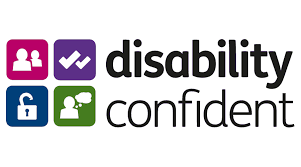Trend Alert: Hiring in 2024

The year 2024 is poised to bring about significant shifts in the employment landscape, driven by technological advancements, evolving workforce preferences, and the aftermath of global events. This report delves into key hiring trends that organizations should be mindful of as they navigate the complex terrain of talent acquisition in the coming year.
Understanding the Why: The decision to change careers often begins with a fundamental question: Why? Understanding the motivations behind this significant shift is crucial. Whether it's a yearning for greater fulfillment, dissatisfaction with the current role, or a deep-seated passion waiting to be pursued, clarity on the 'why' provides a compass for the journey ahead.
2. Skills Over Degrees: In 2024, the emphasis on skills-based hiring is expected to intensify. Employers are recognizing that traditional degrees may not always align with the rapidly evolving demands of the job market. As a result, there will be a greater focus on assessing and valuing specific skills, certifications, and practical experience. This trend aligns with the growing importance of lifelong learning and the need for agile, adaptable skill sets.
3. AI in Recruitment: Artificial Intelligence (AI) is set to play an increasingly prominent role in the recruitment process. AI-powered tools can efficiently analyze large volumes of resumes, screen candidates, and even conduct initial interviews. This not only streamlines the hiring process but also reduces bias by focusing on objective criteria. Human resources professionals are likely to leverage AI to augment their decision-making and enhance the overall candidate experience.
4. Diversity, Equity, and Inclusion (DEI): Diversity, Equity, and Inclusion initiatives will remain a top priority for organizations in 2024. Companies are recognizing the business benefits of a diverse workforce and are actively working towards creating inclusive environments. Hiring practices will be scrutinized to ensure they promote diversity, with an increased emphasis on addressing unconscious biases and implementing inclusive policies throughout the employee lifecycle.
5. Gig Economy and Freelancing: The gig economy continues to expand, and in 2024, we can expect a growing acceptance of freelancers and contract workers as integral parts of the workforce. Organizations will strategically tap into the gig economy to access specialized skills on a project basis, fostering agility and cost-effectiveness. This trend will require HR professionals to adapt their hiring strategies to effectively integrate freelancers into their teams.
6. Employee Well-being: The focus on employee well-being will be a defining aspect of hiring trends in 2024. Companies will prioritize creating work environments that support the physical and mental health of their employees. This includes benefits such as flexible work schedules, mental health resources, and initiatives that promote a healthy work-life balance. Employers that prioritize employee well-being will likely attract and retain top talent in a competitive job market.
7. Employer Branding and Employee Experience: Building a strong employer brand and positive employee experience will be critical for attracting and retaining top talent. Job seekers are increasingly considering not just the role itself but also the company's culture, values, and commitment to employee development. In 2024, organizations will invest in showcasing their unique employer brand through various channels, including social media, to stand out in a crowded talent market.
As organizations prepare for the hiring landscape of 2024, these trends will shape their strategies in attracting and retaining top talent. Flexibility, adaptability, and a focus on employee well-being and diversity will be key drivers in building resilient and thriving workforces. By staying attuned to these trends, businesses can position themselves to not only navigate the challenges but also capitalize on the opportunities presented by the evolving nature of the global workforce.
Kickstart your 2024 off the right way, with the right team! Get in touch with our team to find out how MarkJames Search can help!





